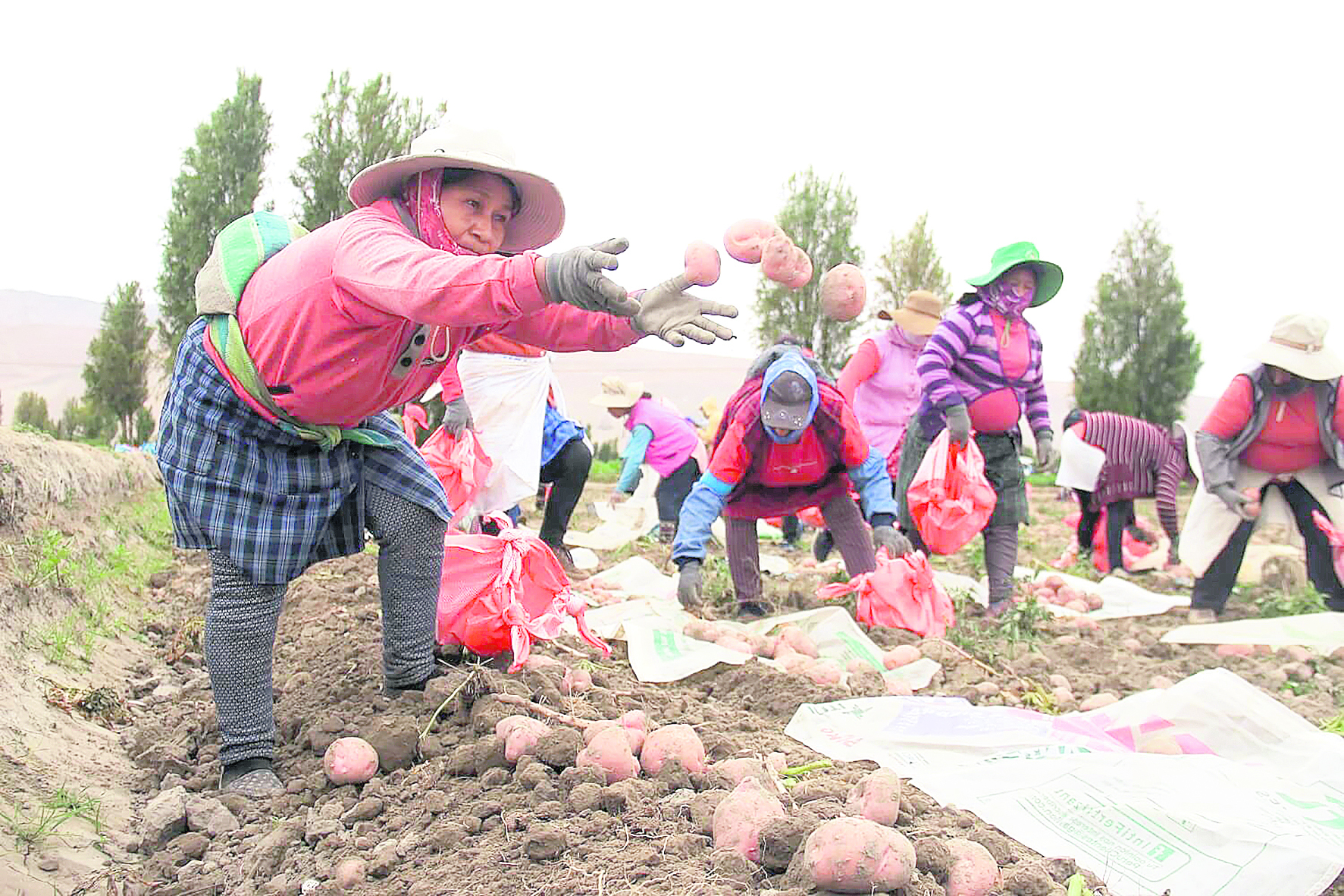
Today marks, for the first time, International Potato Day. Beyond the ancestral richness of the Peruvian soil, which allows us to have nearly 4,000 varieties unique in shape, flavor and texture, the more than 700,000 producing families who live off the tuber barely survive and are forced to auction off their products to recover part of your investment.
The southern mountains are the melting pot of the flag tuber. On average, a small producer does not exceed two hectares. Each one produces, if managed properly, 40 tons and, in the worst case, between 6 to 8 tons, explains Anaximandro Rojas, president of Conveagro.
In recent years, the fertilizer crisis and climatic anomalies have reduced the productive margin, adds Rojas. An average of more than S/10,000 per hectare is required, and the sales made are not enough to cover the high production costs.
“We work at losses”
The outlook is discouraging if one considers that a kilo of potatoes sells for S/0.40 – in the case of commercial species such as white, huayro or pink – and S/1.80 for native ones.
“The middleman earns more. They have the resources to take it to the markets. In retailers, they sell them for 2.50 or 3 soles. The small product cannot go out to negotiate in the large market because transportation costs are high,” Rojas told La República.
For his part, Freddy García, a producer from Yanacancha (Junín), mentions that in his region, producing potatoes requires an expense of S/18,000 to S/22,000 per hectare. In the event that a family opts for a traditional procedure—such as guano or fertilizer for their livestock—it falls to S/15,000. Each hectare produces a maximum of 10 tons of commercial potatoes and a minimum of 5 tons of native potatoes.
Here, he recognizes that the dad It cannot be stored in warehouses because it deteriorates after a few weeks, so they have to be sold at S/1.00 per kilo and S/2.50 for the pigmented ones. It is worth adding that the native ones range between S/5.00 to S/10.00 in supply centers, whether physical or digital.
García was concerned about Midagri’s willingness to repeal the moratorium on GMOs—which is in effect until 2035—to promote their cultivation. “It attacks biodiversity and the only heritage of our ancestors. The farmer will always give lessons to survive. They should not unprotect us,” he concluded.
Midagri recognizes structural flaws
Miguel Quevedo, specialist in the potato chain of the Midagri, told this newspaper that the gaps in the agricultural sector are merely structural due to the lack of census and training. For example, the 700,000 potato producers date back to a 2012 survey.
Furthermore, of the 2.5 million agricultural producers registered to date, only 6% are associated. That is to say, 94% work on their own in an unorganized manner, and, therefore, “the blessed middlemen” tend to take advantage and pay them minuscule prices.
Quevedo points out that the regional governments have not complied with integrating, building infrastructure and providing for small producers, something critical given that 80% depend on rain and only 20% have irrigation. “They are structural problems in policies that we failed,” he indicates.
Data
10.5% is the contribution of the dad to the value of agricultural production. Its gross value is S/8,314 million.
92 kilos per capita of potatoes are consumed per year. Producers claim that he would have dropped to 60 kg.
Source: Larepublica
Alia is a professional author and journalist, working at 247 news agency. She writes on various topics from economy news to general interest pieces, providing readers with relevant and informative content. With years of experience, she brings a unique perspective and in-depth analysis to her work.












